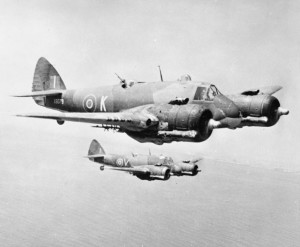 For larger improvement projects with a dedicated project team, there is frequently a “war room,” a conference room where all the project-related information and performance measures are kept. The name sounds cool and gives a certain air of focus to the project.
For larger improvement projects with a dedicated project team, there is frequently a “war room,” a conference room where all the project-related information and performance measures are kept. The name sounds cool and gives a certain air of focus to the project.
The name, however, comes from war rooms for real wars. Recently I had the chance to visit the Lascaris War Rooms in Malta, where I was able to see many tools and practices that are still common nowadays in manufacturing and project management.
Malta during World War II
During World War II, Malta was the only Allied land between Gibraltar and Egypt. As an air and naval base, it was able to seriously disrupt the supply lines from Italy to Africa, with Desert Fox Field Marshal Rommel eventually running out of gas during his African campaign. Similarly, it was a (relatively) safe haven for allied supplies going to and from Middle East.
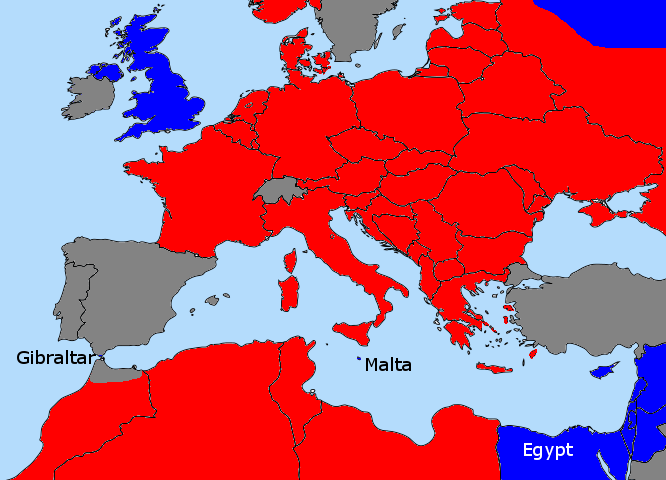
The Germans understood the strategic value of Malta, dropping over 15,000 tons of bombs on Malta during 3,343 air raids. More bombs were dropped on Malta in six months than were dropped on London during the entire war, all in preparation for an invasion of Malta.
During this Siege of Malta, the Maltese defense forces were faced with a chronic shortage on fuel, ammunition, planes, ships, food, and pretty much anything else needed to fight a war. British high command was preoccupied with the German attacks on the homeland. In any case, the entire population of Malta was awarded the George’s Cross, the highest British gallantry award for civilians to “bear witness to the heroism and devotion of its people.”
However, after turning the tide in Britain, British high command also eventually saw the strategic value of Malta, and increased supplies. With America joining the war, Malta was not only able to take a beating, but also to dish one out.
This eventually culminated in Operation Husky, the successful Allied invasion of Sicily on July 9 ,1943, and sort of a training for D-Day in Normandy that eventually put an end to Hitler’s madness.
The Lascaris War Rooms
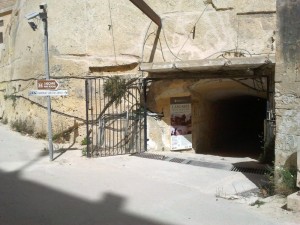
These combat operations were controlled and organized from a number of top-secret war rooms in tunnels deep underneath the old Lascaris Battery in Valletta, the capital of Malta. It was used not only during World War II, but also as the NATO Naval Headquarters during the Cold War thereafter, and was a top secret site for decades (even some policemen nowadays don’t know where it is 🙁 ). As such, there were actually multiple war rooms in these tunnels.
The First War Room during the Siege of Malta
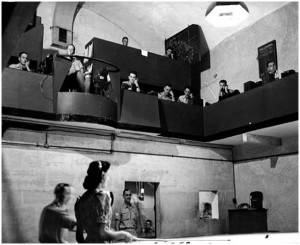
The heart of the Lascaris complex during the Siege of Malta was the RAF Sector Fighter Control Room. This room coordinated the aerial defenses of Malta. It tried to keep on top of such important information as the number of fighters and bombers, where they were, how many made it back, and similar information on the enemies forces.
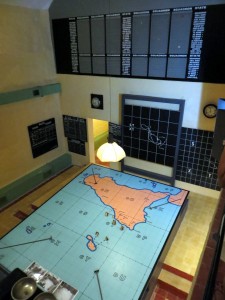
The Fighter Control Room looked like a big opera theater. There was a large gallery on one end with the decision makers, having around twelve seats. They looked at a set of maps and information boards with the latest available information. In this they used a number of tricks that are still popular with lean production nowadays.
One of the important tricks for a successful project (as for example the defense of Malta) is to have all people involved in the same room. Separate offices hinder communication. Sitting in the same room makes sharing information much easier. This room should also have all information relevant to the project. The Lascaris War room is a good example here.
The Fighter Operations Board
 On the very top of the room is a large board, the Fighter Operations Board. Such a board is very similar to what is still commonly used in lean manufacturing nowadays.
On the very top of the room is a large board, the Fighter Operations Board. Such a board is very similar to what is still commonly used in lean manufacturing nowadays.

This board captured the status of the available fighters. As shown in the close up, a squadron could be in preparation (released), ready, off the ground, 15/30/45/60 minutes in the air, engaging the enemy, on its way back, or landed.
 Different cards that hung from these railings indicated the position on a grid, indicating the squadron number, number of planes, if they were orbiting or had landed. In not-so-lucky situations, an SOS was shown, or it stated that the plane vanished from radar (faded), meaning it most likely crashed into the ocean.
Different cards that hung from these railings indicated the position on a grid, indicating the squadron number, number of planes, if they were orbiting or had landed. In not-so-lucky situations, an SOS was shown, or it stated that the plane vanished from radar (faded), meaning it most likely crashed into the ocean.
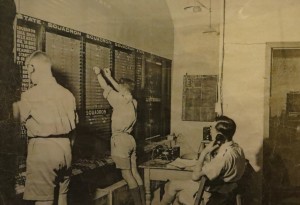
You may have noticed that the board in the RAF Sector Fighter Control Room is very high up on the wall. How did they change the information on the board if it is so far out of reach? The secret is that behind the board was a second room where the cards were hung. This enabled a quick change of the signs and hence an up-to-date status of the available information.
The Plotting Table
 Beneath the gallery was the plotting table, and a large map of Sicily, Malta, and Lampedusa. Assistants moved information about friendly and enemy aircraft and vessels on small movable information makers using croupier sticks.
Beneath the gallery was the plotting table, and a large map of Sicily, Malta, and Lampedusa. Assistants moved information about friendly and enemy aircraft and vessels on small movable information makers using croupier sticks.
By moving these markers, information on the Fighter Operations Board was correlated to their position. The Fighter Operations Board also had some small signs indicating which sector on the map the aircraft were in.
Different Status Information Boards
 The most important board in Lascaris was the scoreboard. The key performance indicator of any air defense was the number of enemy aircraft shot down. Also, in modern project war rooms, the key performance indicators for the project should be displayed prominently (i.e., which subtasks are on time or delayed, total savings, overall speed, etc.).
The most important board in Lascaris was the scoreboard. The key performance indicator of any air defense was the number of enemy aircraft shot down. Also, in modern project war rooms, the key performance indicators for the project should be displayed prominently (i.e., which subtasks are on time or delayed, total savings, overall speed, etc.).
 Probably the second most important was the status of the ASR, the Air-Sea-Rescue. Malta lost many more planes than pilots, and many pilots were able to successfully bail out their destroyed aircraft. With the help of the ASR, many of them also made it home.
Probably the second most important was the status of the ASR, the Air-Sea-Rescue. Malta lost many more planes than pilots, and many pilots were able to successfully bail out their destroyed aircraft. With the help of the ASR, many of them also made it home.
 Also important was the weather on Malta, in particular the conditions on its different airports. Back then the planes did not yet have an all-weather capability. Another board was tracking the list of convoys, and another board showed the radar station status.
Also important was the weather on Malta, in particular the conditions on its different airports. Back then the planes did not yet have an all-weather capability. Another board was tracking the list of convoys, and another board showed the radar station status.
The Clock
 Interesting is also the clock they used in the war room. At first glance it merely looks like a normal clock with some fancy coloring. The color, however, was also used for incoming messages. Whenever the status of the map was updated, the current color was used. At a glance you could see if the message was current, older, or already 15 minutes old – which in aerial combat terms is an eternity. This is another good example of visual management.
Interesting is also the clock they used in the war room. At first glance it merely looks like a normal clock with some fancy coloring. The color, however, was also used for incoming messages. Whenever the status of the map was updated, the current color was used. At a glance you could see if the message was current, older, or already 15 minutes old – which in aerial combat terms is an eternity. This is another good example of visual management.
The Second War Room for the Invasion of Sicily
 As the war progressed and the Allied forces got the upper hand around Malta, an invasion of Sicily was planned, code-named Operation Husky. For this a new set of war rooms adjacent to the first were dug. Operation started shortly before the invasion, and the room was used by General Dwight Eisenhower and Field Marshal Bernard Law Montgomery, along with the heads of the Army General Sir Harold Alexander, Air Force Air Chief Marshal Sir Arthur Tedder, and Navy Admiral Sir Andrew Cunningham.
As the war progressed and the Allied forces got the upper hand around Malta, an invasion of Sicily was planned, code-named Operation Husky. For this a new set of war rooms adjacent to the first were dug. Operation started shortly before the invasion, and the room was used by General Dwight Eisenhower and Field Marshal Bernard Law Montgomery, along with the heads of the Army General Sir Harold Alexander, Air Force Air Chief Marshal Sir Arthur Tedder, and Navy Admiral Sir Andrew Cunningham.
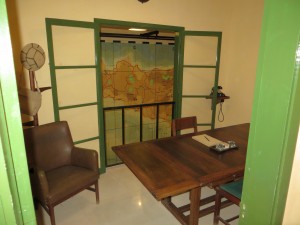 In this war room the different heads of the army, navy, and air force as well as the overall commanders Montgomery and Eisenhower had different rooms (in my view a disadvantage for communication).
In this war room the different heads of the army, navy, and air force as well as the overall commanders Montgomery and Eisenhower had different rooms (in my view a disadvantage for communication).
 The operation was planned using small bands with pins. I have used such a system before too. The results look very nice – but it is a hell of a work to create and maintain. In my lean projects nowadays I try to avoid it, opting for text markers on white board or on paper instead. However, it does work well if you are willing to invest the manpower.
The operation was planned using small bands with pins. I have used such a system before too. The results look very nice – but it is a hell of a work to create and maintain. In my lean projects nowadays I try to avoid it, opting for text markers on white board or on paper instead. However, it does work well if you are willing to invest the manpower.
The Third War Room during the Cold War and Afterward
After the war, the Lascaris War Rooms continued to be used as the headquarters of the Royal Navy’s Mediterranean Fleet and later as one of the NATO naval headquarters. These rooms are currently in restoration and should be opened soon.
Nowadays the formerly top-secret Lascaris War Rooms are open to the public thanks to the efforts of the Malta Heritage Trust. If you happen to be in Malta, I can definitely recommend a visit. In this case I can also recommend to visit Fort Rinella, home to the largest muzzle-loading canon ever made. This is also one of the few places in the world where you can shoot with a historic muzzle loader rifle and even fire an antique 24-pounder cannon.
Other War Rooms
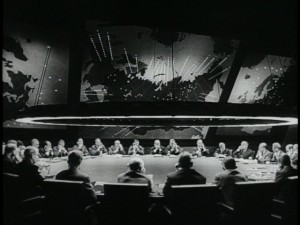
Of course, there are many other war rooms in the world. You can also visit the Churchill War Rooms in London, although I have to say the Lascaris War Rooms in Malta are more impressive. Fictional war rooms are also used in films, the most famous example being in Stanley Kubrick’s Dr. Strangelove.
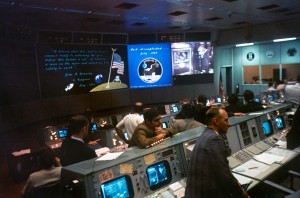
Yet another war room, so to speak, is NASA’s mission control rooms. Decisions based on the available information are also made in these rooms. This is, for example, very nice to see in the movie Apollo 13.
In any case, I hope this post gave you some inspiration on how to manage your own projects. Now go out and improve your industry!
Gallery
Since this post is image rich, I added all the images in the post (and some more) in a gallery for your convenience.
 PS: If you would like to read more about history of manufacturing, then check out my book:
PS: If you would like to read more about history of manufacturing, then check out my book:
Roser, Christoph, 2016. “Faster, Better, Cheaper” in the History of Manufacturing: From the Stone Age to Lean Manufacturing and Beyond, 439 pages, 1st ed. Productivity Press.

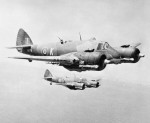



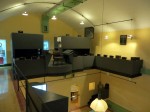




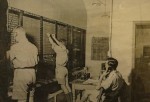

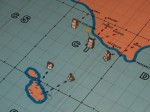

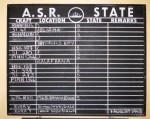
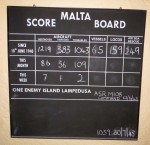




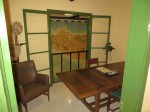




Very helpful thank You